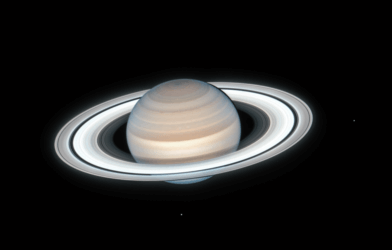The night’s sky can be an awe-inspiring sight. While it can be impossible to tell when one of those distant stars disappears, some give amazing “going away” parties. NASA’s Hubble Space Telescope just caught one of these brilliant explosions on camera and astronomers say it’s also helping them learn a lot more about our universe.
Thanks to an amateur astronomer’s discovery in 2018, Hubble was able to capture images of a supernova 70 million light-years away from Earth. Koichi Itagaki first spotted the explosion in January of that year. Since then, Hubble has been monitoring the dying star’s light show which was named SN 2018gv.
“No Earthly fireworks display can compete with this supernova, captured in its fading glory by the Hubble Space Telescope,” says Nobel laureate Adam Riess of the Space Telescope Science Institute and Johns Hopkins University in a NASA release.
Riess is the leader of the High-z Supernova Search Team and the Supernovae H0 for the Equation of State (SH0ES) Team. These scientists work to measure the rate at which the universe and everything in it is expanding across space.
SN 2018gv, which is in the far away spiral galaxy NGC 2525, originates from a burned-out star. This particular white dwarf is part of a binary system, two stars orbiting around the same point in space.
Astronomers say the white dwarf has been growing in mass as it collects material pulled away from its companion star. Once the dwarf reached critical mass, its core became hot enough to ignite nuclear fusion and burst into a gigantic fireball. This process tears a star apart and the brilliant light we see here lasts for only a short time.
Luckily, Hubble was able to catch this fiery transformation and watched as SN 2018gv faded into nothingness.
Researchers say supernovae like this one all peak at the same level of brightness. Astronomers call them “standard candles” and add that they act as tapes measures for the universe. Supernovae serve as a sort of mile marker, consistently updating astronomers with the steadiness of their explosions.
Scientists are able to calculate the distances of the host galaxies of these explosions by measuring a supernova’s brightness. This also helps to uncover how fast these galaxies are moving deeper into the cosmos.
NASA says Hubble has played a major role in this study for the last 30 years.



